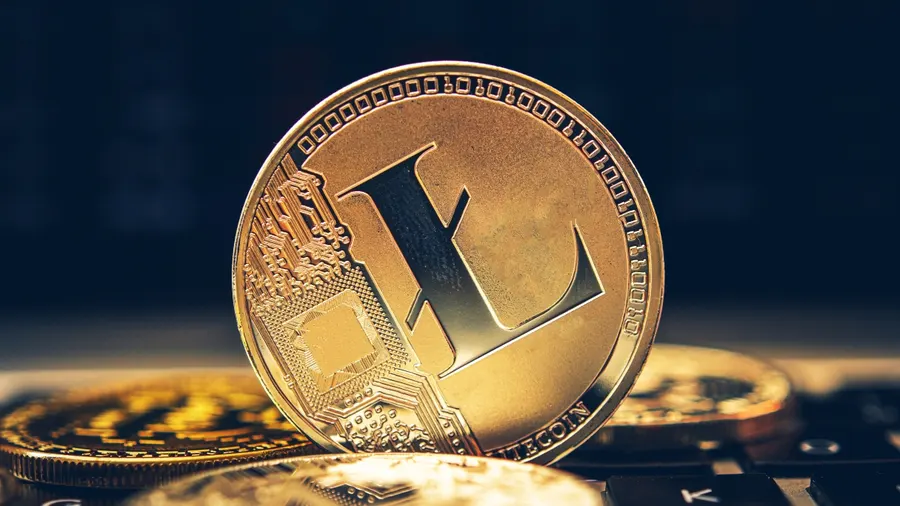As the world’s first cryptocurrency, Bitcoin was a revolutionary tech development that has, unsurprisingly, spawned countless imitations and off-shoots. Some of these have taken the technology forward and have surpassed Bitcoin in many ways, while others have been more comfortable to exist as nothing more than Bitcoin copycats.
Litecoin is among the sector’s biggest cryptocurrencies. It was initially marketed as an alternative to Bitcoin, and the two share many similarities. In this guide, we discuss whether Litecoin’s ultimate goal is to be another Bitcoin or if the asset has other plans. We’ll look at the tech that powers Litecoin and compare it to rivals and analyse the Litecoin price USD to evaluate the health of the asset.
An Overview of Litecoin
Litecoin hit the market in 2011, two years after the launch of Bitcoin. It was touted as a new and improved cryptocurrency, keeping the best attributes of Bitcoin while improving on aspects that had drawn criticism.
Litecoin uses the LTC crypto coin. Transactions are conducted through the asset’s peer-to-peer blockchain network and are verified through a proof-of-work (POW) consensus mechanism.
Litecoin was developed after a fork in the Bitcoin blockchain, so the two are inextricably linked and share many common characteristics. However, in an effort to differentiate it, Litecoin developers introduced a number of changes and upgraded certain elements. Let’s take a look at what these are.
How Does it Compare to Bitcoin?
While Litecoin and Bitcoin both use a POW consensus mechanism, there are key differences in how each system works.
In a POW system, new transactions are added as blocks to the blockchain. Each new block generates a unique code, and users must use computational processing to generate a code that matches or is of lesser value. The user who generates the correct code will successfully validate the block and is rewarded with crypto.
Where Litecoin and Bitcoin differ is the algorithm used by the blocks to generate codes. Bitcoin uses an algorithm called SHA-26 and Litecoin uses one called Scrypt. With Scrypt, block verification requires far less power.
What this means is that transactions on the Litecoin network process at higher speeds when compared to Bitcoin. Litecoin can handle 54 transactions per second, while Bitcoin can only manage seven, a notable difference.
Litecoin v Bitcoin: A Price Comparison
When comparing two cryptocurrencies, looking at their respective technologies is only part of the process. It’s also important to look at each asset’s value and analyse market performance.
Litecoin is currently valued at $63.93. It is down by 2.34% over the past 30 days but has grown by just under 20% on a year-on-year basis.
In comparison, Bitcoin is currently trading at a price of $26,453.90, a significantly higher price than Litecoin. Over the past 30 days, Bitcoin’s value has grown by 1.31%, and it has increased by 36.4% over the past year.
Part of the reason why Bitcoin is more valuable than Litecoin is the hard limit of each asset. Bitcoin is limited to 21 million coins, while Litecoin is limited to 84 million. This means that Bitcoin will cease production of new coins before Litecoin, which drives up the value of the asset.
In August 2023, Litecoin underwent a halving. This is a process that reduces the amount of crypto awarded to block validators by half, controlling the supply of new coins being released into circulation. This halving is a key factor in Litecoin’s positive market performance over the past month.
What Does the Future Hold for Litecoin?
The world of cryptocurrency is fast-moving and ever-changing. The sector is powered by cutting-edge technology, which is constantly evolving, changing the industry as it does.
Litecoin was initially conceived as a Bitcoin copycat, content to ride on the coattails of the flagship asset and enjoy success by association. However, to truly succeed in the crypto world, you need to bring something new to the table, something Litecoin developers quickly realised.
Certain changes were made to Litecoin technology that set it apart from Bitcoin and improved on specific features and functions. The most important of these was the algorithm used to generate hash codes, which reduces the power required to validate blocks.
Related:Everything About the New Energy-Efficient Litecoin Miner
First and foremost, this improved the transaction speed capability of Litecoin. However, it also had another effect which is becoming increasingly important. Bitcoin has faced heavy criticism for its environmental impact, its carbon emissions are comparable to those of entire countries.
The climate crisis is one of the most serious threats facing humanity today. If cryptocurrencies want to be truly viable alternative payment methods, they must be environmentally sound. Bitcoin has failed in this regard, while the changes made to Litecoin ensure it does not share the same shortcomings.
Conclusion
On the surface, it may seem like Litecoin is content to remain a mere Bitcoin copycat. However, when we look under the surface, it’s evident that Litecoin has some key advantages over its rival. The most important of these is its improved POW algorithm which makes Litecoin more environmentally friendly. As the climate crisis becomes increasingly salient, cryptocurrencies like Litecoin will have an advantage and will see more widespread mainstream integration.









